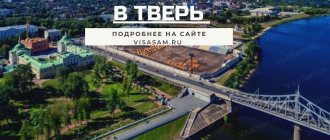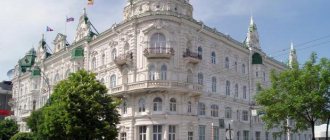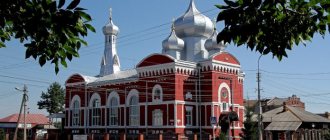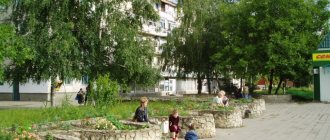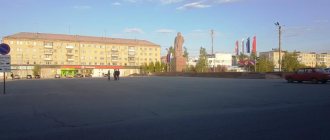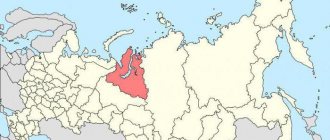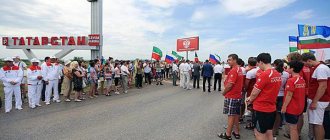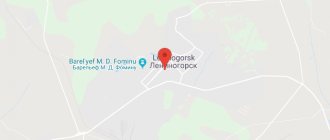Year founded: 1135
Tver celebrates City Day on
the 1st Sunday after July 12
.
In 2021,
this date is
July 18
.
In 2021, due to the pandemic, mass events in honor of the city day are canceled or may be postponed
View of the center of Tver (Photo: www.realto.ru)
Tver
- a Russian city, the center of the Tver region, located on the Volga at the confluence of the Tvertsa, Tmaka, Lazuri, and Sominki rivers.
Story
The first settlements on the site of Tver date back to the 9th century. In 1135, a fortress was built during the struggle of the Rostov-Suzdal princes with Novgorod.
In 1238, the city was destroyed by the Mongol-Tatars, but was quickly restored. In 1247, Tver was allocated to Prince Alexander Yaroslavich Nevsky, and in 1255 it passed to his brother Yaroslav Yaroslavich, the founder of the Tver princely dynasty.
The travel palace was built for the rest of members of the imperial family on the way from St. Petersburg to Moscow. In 1247, Tver became the capital of the Tver Principality. Under Yaroslav's successor, Prince Mikhail Yaroslavich, chronicle writing and stone construction resumed in Tver for the first time in Rus' after a 50-year break.
An interesting fact is that in 1293 the Mongol-Tatar commander Duden did not dare to storm the city. Tver becomes the center of the struggle against Horde rule. In 1317, the Tver army defeated the army of the Tatar military leader Kavgady and Moscow Prince Yuri in the battle near the village of Bartenevo.
In 1485, Moscow troops occupied Tver, and the Tver principality ceased its independent political existence. In 1612, Tver was completely devastated by Polish-Lithuanian troops. In 1766, the main attraction of Tver was erected - the traveling palace of Empress Catherine.
Embankment and monument to Pushkin
In 1900, a permanent bridge was built across the Volga. In 1931, Tver was renamed Kalinin in honor of M.I. Kalinina.
On October 14, 1941, the city was captured by Nazi troops, and two months later, on December 16, it was liberated. After the Great Patriotic War, a second bridge appeared in Tver.
In 1990, the city returned its historical name. Today's Tver is a large industrial center, famous for the production of passenger railway cars, excavators, motor locomotives and other products.
In 1971, the city was awarded the Order of the Red Banner of Labor, and in 2010 it was awarded the honorary title “City of Military Glory.”
St. Catherine's Convent
The sights of
Tver are connected with its historical past. It is worth visiting the Tver Kremlin, the Imperial Travel Palace, St. Catherine's Convent, the White Trinity Church, and the Nativity of Christ Monastery. The city has many bridges and ancient streets that have well preserved the architecture of past centuries.
Interesting Facts
The townspeople are proud of their fellow countryman Afanasy Nikitin; a monument to him was erected in Tver. The Prince of Tver for the first time in Rus' began to call himself Tsar.
The city has a population of about 424 thousand people (as of 2021).
City Day was celebrated for the first time in Tver
June 27-28, 1987. In recent years, the holiday was held on one of the Saturdays in June, and from 2021 it was decided to be held on the first Sunday after July 12, the Day of Remembrance of the Holy Apostles Peter and Paul.
Population dynamics of Tver
The city arose in the 12th century. The first mention of Tver as a craft and trading settlement on the Volga River dates back to 1164. Initially, the city belonged to Novgorod, and then to the Vladimir-Suzdal principality. In the 14th-15th centuries, Tver was a major trade, craft and cultural center of North-Eastern Rus'. In 1485 it became part of the Moscow state. In 1627, about one and a half thousand people lived in the city.
The flourishing of the settlement began with the advent of the Moscow - St. Petersburg road. In 1787, the population of Tver was already 15,100 people. Over the next hundred years, the population increased fivefold. By the end of the 19th century, the population of Tver reached 54 thousand people. The city suffered significant losses during the First and Second World Wars. In 1950 the population was 194.3 thousand people. Over the next 23 years it doubled.
By the time of the collapse of the USSR, the population of Tver already exceeded 450 thousand people. During the period of independence of the Russian Federation, this figure has decreased significantly. In 2000, 455 thousand people lived in the city, and in 2003 - only 408,900. In the last five years, there has been a positive trend in the increase in the population of Tver. In 2011, 404 thousand people lived in the city, in 2021 - 416.
TVER
TVER, city in Russia, adm. center of the Tver region Us. 414.0 thousand people (2015). Located on the river. Volga, at the confluence of the Tvertsa and Tmaka rivers. Railway station. Road junction.
Photo by A. I. Nagaev Tver. Panorama of the city.
With settlements immediately preceding the city, on the territory of modern. T. are associated with the remains of buildings and finds of the 10th–11th centuries, cultural layer 11 - early. 12th centuries at the confluence of the Tmaka and Tvertsa rivers into the Volga (another name is Tver; according to one version, the name of the city comes from it). The earliest mountain layer is located east of the mouth of the Tmaka (Kremlin territory), including log buildings (dendrodates: 1149, 1150, 1185–89), oak mountain. wall of a hook (hook) structure (no later than the mid-12th century according to radiocarbon dating), seal of the Smolensk prince. Rostislav Mstislavich and others. According to V.A. Kuchkin, T., most likely, was one of the 6 Volga cities that were taken by the prince. Izyaslav Mstislavich with the Novgorodians in 1149 at Prince. Yuri Vladimirovich Dolgoruky. The first direct mention of the city in the “9th miracle” “Tales of the Miracles of the Vladimir Icon of the Mother of God” beginning. 1160s indicates that by this time T. was an adm. center and was governed by the boyar-governor of the Vladimir prince. Andrey Yurievich Bogolyubsky. It was part of the Grand Duchy of Vladimir, then the Principality of Pereyaslavl. Destroyed during the Mongol-Tatar invasion in February. 1238. The concealment of 2 large treasures of ancient Russian is associated with this. silver jewelry (including using filigree, granulation, niello, engraving techniques).
After 1238 the city was restored. Capital of the Tver Principality (1247–1485). Probably in mid. 1260s T. became the center of the bishopric. In 1285–90 for the first time in the North-East. Rus' after the Mongol-Tatar invasion, the white-stone Transfiguration Cathedral was built [3-apse, 3-nave, 4-pillar, with galleries and porches, white-stone porch; fragments of carved architems were found. details, frescoes, ceramics. floor tiles]. In the end 13th–14th centuries stone churches were built in the Assumption Otroche Monastery; in 1323–25 – in mon. St. Theodore (at the beginning of the 14th century the Church Rules in Greek were created there; now in the Vatican Library). Basic settlements of T.: Zagorodsky (including buildings with dendrodates 1155, 1168, 1181, 1190s, a fortified ditch), Zatmatsky (from the 12th/13th centuries), Zavolzhsky and Zatveretsky (no later than the 14th century) . In the end 14 – 1st floor. 16th centuries coins were minted in T.
Traces of metallurgy, metal and woodworking, tanning, jewelry, bone cutting, stone cutting, stone cutting (harvesting a stone icon of the late 12th century), pottery (including glazed ceramics) and other crafts have been identified. Among the finds: 5 birch bark letters (from the 1180s–1190s to the 14th century), a fragment of a stone product with an alphabet (late 13th – mid-14th centuries) and a golden encolpion with a multi-line inscription of the 14th century, wrote; hanging seals; leather goods [including a belt with embossed images of church holidays (2nd half of the 13th – 14th centuries)], etc.
In 1485 T. was occupied by the troops of the leader without a fight. book Moscow Ivan III Vasilievich. After joining Rus. The state was the center of the appanage (1485–90, 1576–1586/87). Destroyed by the oprichnina army in 1569 during the campaign against Novgorod. During the Time of Troubles, the Polish-Litovs were captured. troops in 1609, until the middle. 17th century was in decline. The fortifications were reconstructed for the last time in 1707. District city (since 1708) and provincial center (since 1719) St. Petersburg. (before 1710 Ingria) province. (1708–27) and Novgorod province. (1727–75). Thanks to the construction of the Vyshnevolotsk water system and the St. Petersburg-Moscow highway, it became a major transit trade center. Center of the Tver province (1775–1929; until 1796 Tver governorship). The development of the city's industry was facilitated by the opening of traffic along the sections Vyshny Volochyok - Tver (1850) and Tver - Moscow (1851) of the Nikolaevskaya railway. d.
Sov. power was established on October 28 (11/10). 1917. District (1929–30) and district (1929–35) center Moscow. region In 1931–90 the city was called Kalinin. Since 1935 adm. center of the Kalinin (from 1990 Tver) region. In 1936, railway traffic was opened. line Doroshikha (Kalinin) - Vasilievsky Mokh. In the 1930s–50s. Means. The architect suffered losses. the appearance of the city, including during the war. action and short term. occupation of Germany troops (10.17 – 12.16.1941) in Vel. Otech. war during the Battle of Moscow 1941–42.
Church "White Trinity". 1563. Bell tower - 1812 (built on in 1878). Photo by P. S. Pavlinov
The city center, located on the right bank of the Volga, was built up after the fire according to the regular plan of 1763 (presumably by architect P.R. Nikitin; revised in 1767); it is based on a composition with 3 rays diverging from Polutsirkulnaya Square. to the middle and corners of the Kremlin, on the site of which the Traveling Palace of Catherine II was built (1764–71, Nikitin; rebuilt in the early 19th century, architect K. I. Rossi; now KG). Ch. The streets and the Volga embankment are built in classic style. buildings; among them - the magistrate (1771–1774), the governor's house (1770–80s), the Assembly of the Nobility (1841–42, architect I. F. Lvov). Preserved: 5-chapter c. “White Trinity” (1563; bell tower - 1812, built on in 1878), c. Nativity of Christ in Rybaki (1729–43), baroque churches of Saints Boris and Gleb (1759–71), Intercession (1765–74) and Nativity of the Virgin (1777–95); c. St. John the Baptist (1784–1808; bell tower - 1826), Ascension Church. (1826–36, Lvov), Nativity of Christ women's mon. (founded in the late 14th–15th centuries, closed in 1923, revived in 1999; 5-domed cathedral, 1814–20, Russia; Resurrection Cathedral in neo-Russian style, 1912–13, architect N. P. Omelyusty), cinema “Star” in the spirit of constructivism (1935–37, architect V.P. Kalmykov).
Photo by D.V. Solovyov The building of the provincial government (now the Administration of the city of Tver). 1778–83. Architect F. F. Shtengel.
On the left bank of the Volga there is the Assumption Cathedral (1722) of the Assumption Otroch mon. (founded in the 13th century, closed in 1918), Resurrection Church. (1728–31), c. Trinity beyond the Volga (1733–37), c. Mch. Nikita (1760–63), the Arefievs’ house (1762–68, now the Museum of Tver Life), St. Catherine’s Women’s Monastery. (founded 1996; cathedral, 1774–86), river station in the spirit of the Owls. neoclassicism (1935–38). After the war, T. was restored according to the general plan of 1944–45 (architect N. J. Colley). In 2010–14, the Cathedral of St. Alexander Nevsky was restored in the Russian style (1891–93, architect F. N. Malinovsky, demolished in 1983). Monuments: Afanasy Nikitin (1955), I. A. Krylov (1959); A. S. Pushkin (1974), M. E. Saltykov-Shchedrin (1976, both by sculptor O. K. Komov). In the mountains line - an expressive group of Mesolithic. sites and other archaeological sites. monuments.
Among scientific institutions - Center. Research Institute for Processing Staple Fibers (1960, current name since 1970), Institute of Carriage Building (1962), Research Institute of Information. technologies (1974; modern name and status since 1990), All-Russian. n.-i. and design and technological Institute of Mechanization of Flax Growing of the Russian Agricultural Academy (1989). State universities: University (history dates back to 1870, current status since 1971), Technical. University (history dates back to 1922, current status and name since 1994), Med. Academy (history dates back to 1936, current status since 1995), Military. Aerospace Academy defense named after Marshal Sov. Union of G. K. Zhukov (established in 1956 as the Military Command Academy of Air Defense, since 1974 named after G. K. Zhukov; since 2005 modern name), Agricultural Sciences. Academy (1971). Moscow branches universities The municipal library system includes 36 branches. Regional universal scientific. fuck them. A. M. Gorky (1860).
Museums: State united [1977; 32 branches, including museums - local history. (founded in 1866), Tver life (1970), M. E. Saltykov-Shchedrin (1976)]; history of Tver medicine (opened in 1969; current name since 2015), Tver railway workers (founded in 1982, current name since 2012), communications of the Tver region. (1997), “Tver Armory Chamber” (1998), M. Krug (2007), goat (2008). Regional KG (founded in 1866, independent museum since 1937, current name since 1990). Gor. museum and exhibition center (2007). Regional House of Science and Technology (1962).
Theatres: drama (history dates back to 1745, permanent troupe since the 1920s), Youth Theater (1932), puppet theater (1944). Regional Philharmonic (founded in 1936, since 1999 academic), consisting of: the chamber choir “Russian Partes” (founded in 1989 as a “madrigal singing ensemble”, since 2003 its current name) and the chamber orchestra “Russian Camerata” (1990 ; both have gubernatorial status since 2012), etc. A Czech organ is installed in the concert hall of the Philharmonic. Rieger-Kloss (1991–1992). Intl. festival of music of J. S. Bach (since 1992), all-Russian. festival "Musical Autumn in Tver" (since 1969, annually).
Among the sports arenas, the most popular are: the Khimik football stadium (1957; about 8 thousand seats), the Yubileiny Ice Sports Palace (1983; 2 thousand seats), the Yunost Sports House, and the hippodrome (1922).
The most developed are mechanical engineering and metalworking, chemical and food-flavoring industries. Leading enterprises: car builders. plant (passenger and freight cars), Tverskoy Excavator, Tsentrosvarmash (welded metal structures for the needs of railway transport, etc.), production. complexes of the companies “Dielectric Cable Systems” (cable-supporting systems, low-voltage equipment) and “Sibur-PET” (polyethylene terephthalate granulate), “Volzhsky Baker”, “Khleb” (both produce confectionery products, etc.), “United Bottling Group” (Russia) Swiss company; bottling of non-alcoholic and low-alcohol drinks). Special production builds. and road equipment, trailers and semi-trailers, equipment for the food industry, cable, wire and paint products, cord fabric for the tire industry, reinforced concrete. products, sand-lime bricks, misc. crystal lamps, glass containers; repair of elevators and escalators. 2 printing plant.
Key Demographics
The city's population is dominated by women. The share of men in the total number of residents of Tver is 44.3%. About 15% of the population are under working age, 25% are older than it. Thus, most of the population is economically active.
The administrative-territorial division of the city was first approved in 1936. Changes were made to it in 1965, and then in 1976. Even then, Tver was divided into four districts. The most populated is Zavolozhsky. It is home to 144 thousand people. The Moskovsky district is in second place for this indicator. It is home to 123 thousand people. On the third - Proletarsky, on the fourth - Central. Historical districts are also distinguished inside Tver. Many of them were independent settlements before they became part of the city.
A large number of young people are trying to leave the city for the capital. This weakens the demographic potential of Tver. The situation is aggravated by the fact that most often the most gifted leave. However, recently the outflow has begun to be compensated by migrants who are replenishing the population of Tver and the region. Among them, Ukrainians, Tajiks, Azerbaijanis, Uzbeks, Armenians and Moldovans predominate. Migrants from Iran, Syria and India are also regularly registered in Tver.
Tver is ancient. Where did the name come from, or five versions of the origin of the word “Tver”
The Tverigrad.ru portal and the famous Tver blogger and local historian Igor Marchenkoff present the one hundred and thirty-second issue of the “Ancient Tver” project, in which photographs, images, facts, stories and legends show what the city was like yesterday and what it has become today.
Today we will remember five versions of the origin of the word “Tver”. But let's start with the fact that Tver arose as a city at the mouth of the Tmaka River. In the early 30s, archaeologists conducted excavations here, the purpose of which was to clarify the time of the emergence of Tver. Based on the results of excavations, it was determined that the “city” with fortifications was located on a cape near the Tmaka River. The oldest embankment structure (shaft) arose no later than the 12th century. Before this, i.e. in the 11th century there was a rural settlement here. On the left bank of the Volga and near the mouth of the Tvertsa, where the Otroch Monastery was later located, no fortifications or settlements earlier than the 13th century were discovered. Now let’s look at the versions of “where the word Tver came from”:
The hill where Tver was founded
The first version is “Fino-Ugric”
“Tver” is a derivative of the Finnish word “tiort” - “fast”. There is a hypothesis that Tver was founded by Novgorodians, who in the 8th-9th centuries mastered the flows of the Msta and Tvertsa rivers.
The Novgorodians - Ilmen Slovenes - moved to these lands through the lands occupied by newcomers from the east - to the fullest extent. And the Novgorodians did not have the habit of honoring their greats by assigning their names to settlements. They were familiar with the name of the river (Tver, Tfer, Tikhver) and they named the settlement the same. You can quote from the work of V.S. Borzakovsky: “Probably, the Novgorodians founded a settlement at the mouth of the Tvertsa, which received its name from the name of the river; this settlement, as a result of its advantageous position in terms of trade, began to grow rich (like Torzhok, which grew rich for the same reason).” The author further indicates that this is a Novgorod settlement at the end of the 12th century. was fortified by the Suzdal princes already at the beginning of the 13th century. this city was a Suzdal fortress on the Novgorod-Suzdal border. But then they had to found it on the left bank, but there was no settlement there, as excavations proved in the 30s of the 20th century.
But TUAC member P.N. Sveshnikov believed that the word Tver comes from the Finnish root Tes - to shine, and the Finnish ending believe (obviously, it means the word river), and means “brilliant river”.
Adam Olearius Tver in the 1630s
The second version is “Slavic”
"Tver", which originally looked like "T'khver", has Russian roots in the East Slavic languages. For example, “firmament”. The basis for this version of the history of Tver was laid by V.N. Tatishchev.
He noted that in 1182, Prince Vsevolod Yuryevich ordered the construction of Tverd on the Volga “at the mouth of the river” and ordered to “closely watch so that people from Novgorod and Torzhok do not pass to the Volga to steal.” And although historians are wary of the so-called. “Tatishchev’s news”, yet this message from Tatishchev looks logical, since Vsevolod after the events of 1181. I could not help but appreciate the importance of controlling the mouth of the Tvertsa and thereby the movements of Novgorodians in the event of further conflicts.
But the historian did not give any explanation for the etymology of the city’s name. And it’s not a fact that we are talking about Tver.
The third version is “Polish-Lithuanian”
It is based on the fact that the name “Tver” is based on the Polish word “twierdza” - “fortress” and the Lithuanian “tvora” - “fence”, for example, on the territory of Lithuania in ancient times there were the cities of Tverai and Tveresius.
Modern drawing of ancient Tver
The fourth version is “Sanskrit”
It says that the Tvertsa River and the city of Tver go back to the Proto-Indo-European language - /dv;raka/ /dvAraka/ n. Gate, door, border, frontier. If there are no questions with Tver, the toponym is from a hydronym, as usually happens. But Tvertsa, another thing, received a very ancient name from our ancestors.
Let's turn to Sanskrit:
;;;;;; /dv;raka/ /dvAraka/ n. gates; door, ;;;;;; /dv;r// /dvAr// f.
1) hole 2) exit; gates; door
Initially, the words door, gate had meanings in Russian:
Gate - gate - A common Slavic word of Indo-European origin from the same stem as the noun gate. However, it has been suggested that the noun gate may go back to the stem verti - “to lock”. Krylov's etymological dictionary. Gate - I: 1) entrance to the city. The city was usually locked at night or when the enemy approached.
Gates were also called guard fortifications at the portage borders[4]. Gates, guard fortification // Encyclopedic Dictionary of Brockhaus and Efron: in 86 volumes (82 volumes and 4 additional). - St. Petersburg, 1890-1907. other-russian vor “fence, fence”, a derivative with the verbose o/e from *verti “to lock”. The root vor is preserved in the hydronyms: Vor-onezh, Vor-skla, Vor-ona.
During the transition “D” is pronounced as “YOU”, “T”, and “K” in “C” during palatization, a sound change, as a result of which a hard consonant becomes soft, palatal or palatalized, we get “dv;raka”:
As “tyvaratsa”, i.e. Tvertsa, a river flowing into the Volga near Tver. What does it mean: “Gate, door, river closing the approach to the fortress, border of the defense line.” As you know, fortresses were erected at the confluence of two rivers, surrounded by walls and a moat. And on the side not covered by natural boundaries, the most powerful walls, ditch and gates were erected.
It was along this river that the border between the Rostov-Suzdal, and later the Vladimir-Suzdal and Novgorod principalities passed at one time. Everything also seems natural and logical.
Moat of the fortress in the city garden
Fifth version - “from the Tivertsi tribe”
Interesting information about opinions regarding the origin of the word Tver is reported by V.A. Pletnev (member of the Tver Scientific Archival Commission (TUAK)): R.N. Nikulin believed that the river and the city owe their names to the chronicle tribe of Tiverts, who, pressed by Prince Oleg, moved to the extreme northeastern borders of the Russian state. Here they settled along the left tributary of the Volga and gave this river its name, which in the chronicles is transmitted as “Tkhver” or “Tkhfer”. In addition, R.N. Nikulin, as reported by V.A. Pletnev, believed that the name of the city in the sources - Ust-Takhver - indicates its origin from the name of the Tvertsa River, just like the cities of Ust-Yug, Ust-Sysolsk , Ust-Mologa are also named after the names of the rivers (36, p. 173, note 1).
In the photo there is an image of the Tver Kremlin on the icon of Michael and Xenia from the beginning of the 15th century, the hill where Tver was founded, Adam Olearius Tver in the 1630s, the moat of the fortress in the city garden, a modern drawing of ancient Tver.
Sources: Malygin P.D. Tver and Novotorzhsko-Volotsk lands in the XII-XIII centuries. // Formation of a European medieval city. - 1989. - P. 125. V. N. Tatishchev. “History of the Russian State” Encyclopedic Dictionary of F. A. Brockhaus and I. A. Efron, article “Tver” Borzakovsky V.S. History of the Tver Principality. Tver, 1994. Bogdanov S.V. (Tver) The name Tver and Tvertsa in written sources. Tver city. Why is Valery Marininsky named like that?
“Tver tavern” - April 10!
We invite all lovers of history and gastronomic delights on April 10 at 12:30 to the opening of the spring season of the original gastronomic and educational tour “Tver Tavern,” which celebrated its anniversary on Sunday!
Guests on the tour will go through historical places and visit three popular establishments of Tver: the Leningrad restaurant, the Old Suitcase beer pub and the Pino Grigio restaurant.
On the tour "Tver Kabatskaya"
In each of the three restaurants, tour participants will take a fascinating journey into the world of Tver gastronomy with tasting of drinks and dishes of Tver cuisine prepared especially for this tour (this is a surprise in each tour).
Guests of the Tver Kabatskaya tour at the Pino Grigio restaurant
Moreover, in three restaurants, tasting dishes will be presented by chefs (or sous-chefs), and guests will be able to hear a fascinating story about the history of each of them.
This project started before the new year 2021 and already has a lot of reviews, here are some of them:
On the “Tver tavern” tour, stew from the chef. restaurant "Leningrad"
Tatiana Smolenskaya: “The tour was wonderful! Thank you, Igor Marchenkoff, for the informative information! I really didn’t know much! And, of course, surprises from chefs from three restaurants! We spent Christmas Day with pleasure and benefit! I recommend to everyone!".
On the Tver Kabatskaya tour we will definitely taste the first one.
Natalya Evstafieva: “Everything is great, we want to continue! We were several friends, and I will express the general opinion. The tour turned out to be very extensive, both in content and in the number of treats. The excursion was not limited to one topic, which was very nice. We visited several historical places and heard many interesting and little-known historical facts. The passionate storyteller and the professionals who treated us in three establishments in the city turned out to be at their best. Tasty, satisfying, and most importantly, a program compiled with love.”
Duration of the excursion: approximately 3.5-4 hours.
Program cost: 1800 rubles (“All inclusive”, prepayment) Collection point: monument to Afanasy Nikitin Collection time: April 10 at 12:30 Registration by phone: 8-952-063-06-00
We ask all those who signed up not to have a heavy breakfast or lunch before the tour!
Details and reviews can be read here.
If you find an error, please select a piece of text and press Ctrl+Enter.
13
3
Ethnic composition
The All-Russian population census, which was carried out in 2010, showed that the majority of residents of Tver consider themselves Russian. About 5 thousand people are Ukrainians. Other ethnic groups are also represented. Among them are Armenians, Azerbaijanis, Belarusians, Tatars, Karelians, Uzbeks, Tajiks. The share of Chuvash, Jews, Germans, Mordovians, Georgians, Bashkirs, Kazakhs and others is insignificant. There are Azerbaijani and Armenian dynasties in Tver.
What is the population of Tver on January 1, 2022?
With the population of the city of Tver as of January 1, 2022, how many people live according to the census, how many people officially live today, we will look further, learn about the latest information on a given topic, and look at it in more detail.
History and traditions of Tver, modern city
Tver is a Russian city, the center of the Tver region, located on the Volga at the confluence of the Tvertsa, Tmaka, Lazuri, and Sominki rivers. The history of the first settlements on the site of Tver dates back to the 9th century.
In 1135, a fortress was built during the struggle of the Rostov-Suzdal princes with Novgorod. In 1238, the city was destroyed by the Mongol-Tatars, but was quickly restored.
In 1247, Tver was allocated to Prince Alexander Yaroslavich Nevsky, and in 1255 it passed to his brother Yaroslav Yaroslavich, the founder of the Tver princely dynasty.
In 1247, Tver became the capital of the Tver Principality. Under Yaroslav's successor, Prince Mikhail Yaroslavich, chronicle writing and stone construction resumed in Tver for the first time in Rus' after a 50-year break.
An interesting fact is that in 1293 the Mongol-Tatar commander Duden did not dare to storm the city. Tver becomes the center of the struggle against Horde rule.
In 1317, the Tver army defeated the army of the Tatar military leader Kavgady and Moscow Prince Yuri in the battle near the village of Bartenevo.
In 1485, Moscow troops occupied Tver, and the Tver principality ceased its independent political existence.
In 1612, Tver was completely devastated by Polish-Lithuanian troops. In 1766, the main attraction of Tver was erected - the traveling palace of Empress Catherine.
In 1900, a permanent bridge was built across the Volga. In 1931, Tver was renamed Kalinin in honor of M.I. Kalinina.
On October 14, 1941, the city was captured by Nazi troops, but two months later, on December 16, it was liberated.
After the Great Patriotic War, a second bridge appeared in Tver.
Today's Tver is a large industrial center, famous for the production of passenger railway cars, excavators, motor locomotives and other products.
In general, Tver is divided territorially into four main districts (administrative districts), more details about them later in the table...
Inner areas of the city of Tver
| № | Name | Population | OKATO code |
| 1 | Zavolzhsky district | ↗146 728 | 28 401 365 |
| 2 | Moskovsky district | ↗124 898 | 28 401 370 |
| 3 | Proletarsky district | ↗98 972 | 28 401 375 |
| 4 | central District | ↗54 474 | 28 401 378 |
Tver is one of the industrial centers of the country; many people work at its enterprises and firms of various forms of ownership in various sectors of the local economy.
Many areas of the economy are developed in the city, including modern ones, as well as sports and the entertainment industry.
Further and below, a table of population growth/decrease in Tver over the past five years, from which we learn about a decrease or increase in the number of people in the city.
Climate of Tver
| Index | Jan. | Feb. | March | Apr. | May | June | July | Aug. | Sep. | Oct. | Nov. | Dec. | Year |
| Abs. Max. | 8,3 | 7,6 | 16,7 | 26,2 | 33,3 | 34,5 | 36,5 | 38,6 | 27,4 | 21,7 | 14,8 | 9,5 | 38,6 |
| Wed. temp. | −7,5 | −7 | −1,6 | 5,9 | 13,4 | 16,9 | 19,1 | 17,4 | 11,8 | 5,5 | 0,3 | −3,6 | 6,0 |
| Abs. min. | −34,7 | −36,4 | −25,3 | −10,7 | −3,5 | 0,0 | 4,0 | 3,4 | −1,6 | −13,6 | −24,3 | −31,5 | −36,4 |
Territory of the city of Tver: 152.00 km2
Postal code of Tver; 170000
Tver telephone code: +7 (4822)
We will find out later about the real population in the city of Tver as of January 1, 2022, how many people officially live there, first of all, but for now, check out how many people live in which districts and administrative districts according to the latest information...
Employment
In Tver, the number of labor force aged 15 to 72 years in 2016 amounted to 689 thousand people. The employment rate among them is 66%. This figure has decreased by 1% over the past five years. The unemployment rate in Tver is 6%. Most people are employed in wholesale and retail trade, and vehicle repair. In 2015, 103.5 thousand city residents worked in this sector. Quite a lot of people are also employed in the manufacturing industry. In 2015, 98.6 thousand people worked in this area. In third place in terms of the number of employees is agriculture and forestry. 59 thousand residents work in this sector.
Approximately the same number of people are employed in such areas as construction, transport and communications, social security, education, and healthcare. The least amount of labor is employed in household activities and fishing. Over the past five years, the share of workers has increased in such areas as construction, wholesale and retail trade, hotel and restaurant business, and real estate operations. Thus, the global trend is observed. The number of people employed in agriculture and industry is decreasing, while in the service sector it is growing.
How many of us are left in 2021? The Tver region continues to die out
Data on the demographic situation in the region are known. As of January 1, 2021, the population of the Tver region was 1,260,379 people, of which 959,646 were urban and 300,733 were rural. Compared to 2021, the population of our region decreased by 4,628 people, and this is a continuation of the long-term trend of demographic decline in the Upper Volga region. After all, 6 years ago more than 1.3 million people lived in the Tver region.
For January-October 2021, the ratio of births and deaths in the region is striking. In the first 10 months of last year, 18,424 people died, that is, more than in the whole of 2021 (17,245 deaths). As a result, the natural population decline in January-October alone amounted to 9,972 people (8,062 people in 2021).
There are no data available as of January 1, 2021.
The coronavirus pandemic is partly to blame for the current situation. For example, the mortality rate in Russia in January-October 2020 was the highest in ten years, as follows from RBC calculations based on Rosstat data. Regionally, mortality per 10 thousand inhabitants in ten months of 2021 increased in 82 out of 85 regions of the country (including the Tver region) compared to 2021. In 33 out of 85 regions, the rate, as well as in the country as a whole, was the highest in a decade.
At the same time, the number of both rural and urban populations in the region is declining. Therefore, a recent message on the Government website, with reference to the regional registry office, sounded very optimistic that 10,082 children were born in the Tver region last year. Well, here is the assurance that “improving the demographic situation is one of the key tasks of the Government of the Tver Region.”
The key task is, of course, good. But how is it implemented in our region? And why are all the statistics given without comparison with the indicators of past years? What does it look like in dynamics? However, if even a superficial analysis had been carried out on the Government website, not a trace of optimism would have remained.
Meanwhile, almost all Tver media simply reprinted data from the Government website. For example, we learned that out of more than ten thousand newborns, 3,656 were first-born, 3,767 were second-born, and 129 were sixth and subsequent children in families. Also, 3,116 babies were born to women aged 30-34 years, 2,823 children were born to mothers aged 25-29, and 2,134 newborns were born to women under 25 years of age.
This is interesting, but let's supplement these statistics with other data. For example, 10,680 newborns were born in 2021, which means that last year the number of births decreased by almost 600 babies. The decline in the number of births is a long-term trend that is confirmed every year. According to Tverstat, in 2018, 11,605 newborns were born in the Tver region, in 2015 - 14,720, in 2010 - 14,864, etc. That is, over 10 years the number of births has decreased by almost a third. Is there any reason for optimism here?
At the same time, in Tver the situation is slightly different. Here, in recent years, demographic statistics show an annual population growth of about 2-3 thousand people, but mainly due to migration rather than birth rates. There are no detailed data as of January 1 of this year, but according to Rosstat, in the context of municipalities of the Russian Federation, as of January 1 of last year, population growth amounted to more than 4 thousand people.
In total, in 2021, 6 thousand 35 babies were born in the capital of the Upper Volga region, that is, more than 60% of those born in the Tver region. According to the Tver registry office, many received names such as Kirill, Ilya, Egor, Lev, Daniil, Matvey, Milana, Sofia, Anna, Ulyana, Varvara. Some happy parents gave their children exotic names, for example, Leon, Savva, Stefania, Mira, Amelia, Evstigney, Demid, Kuzma, Zhivana.
Demographic component in territorial planning of the Tver regionShchukina A.S.[1] (Published in: Vestnik TvGU. Series “Economics and Management”. 2015. No. 1, vol. 2. pp. 107-116.)
The specifics of the current stage of demographic development of the country as a whole and most of its regions determine the special significance of the demographic sections of strategic and territorial planning. They analyze the current demographic situation, substantiate changes in the parameters of the population, fertility, mortality, migration movements, and the age and sex structure of the population. At the level of constituent entities of the Russian Federation, these sections are:
- concepts (programs) of demographic policy,
- socio-economic development strategies,
- territorial planning schemes,
- regional target programs.
At the municipal level these are:
- economic and social development programs,
- territorial planning schemes for municipal districts,
- general plans of urban districts, urban and rural settlements.
In regions with a favorable or relatively favorable situation, the characteristics of the demographic situation should be analyzed, but the main problems in them are economic and social. Demographic policy in such regions is associated with the consolidation of positive trends in demographic dynamics, increasing the birth rate and increasing life expectancy.
In regions with a particularly difficult demographic situation, the demographic component should occupy a significant place. Demographic problems manifested themselves earlier and more strongly in the regions of the Central Federal District and the North-West. The Tver region, as well as the Vladimir, Ivanovo, Ryazan, Smolensk and Tula regions in the concept of demographic development of the Central Federal District are identified in the group with the most unfavorable situation. The population in such regions determines the parameters of the economy and settlement in the future, therefore the diagnosis of the demographic situation should be in the first place in the sections devoted to the problems of regional development, risks, tasks, goals and priority areas of development (Table 1).
Table 1. Demographic component of the Territorial Planning Scheme of the Tver Region until 2030
VOLUME II. Analysis of the state of the territory, problems and directions of integrated development
Section 3. Analysis and assessment of the socio-economic situation
3.2. The place of the Tver region within the Russian Federation and the Central Federal District (assessment of the region’s place according to the main demographic indicators, a more detailed analysis of life expectancy and its determining factors)
3.4. Settlement (territorial section - municipalities, in detail with graphs and drawings)
3.5. Demographic situation (analysis of DS for the region as a whole, for 5 urban districts and 36 municipal districts, in detail - 17 pages)
3.9.3. Assessment of the Ministry of Defense on environmental quality and population morbidity
| VOLUME V. Project proposals. Forecast of the phased development of the territory. Section 1. Main problems 1.1. Socio-economic problems (demographic problem No. 1) Section 2. Strategy for spatial organization of the territory 2.2. Development options (3 possible scenarios for demographic development - extrapolation, moderate, optimistic with an assessment of the future population size; in detail - moderate option) 2.3. Population forecast for 2015, 2021, 2030. across 43 administrative-territorial units |
| 2.5. Formation of a supporting framework for settlement, planning organization of the territory, functional zoning (population forecast in the context of 6 planning districts) |
Currently, the spatial development of a territory is closely related to demographic processes, since they largely determine the stabilization or compression of the existing network of populated areas and, along with it, the developed space. In territorial planning schemes and general plans, the relationships between the demographic and settlement sections should be deeply developed. In existing territorial planning schemes, the settlement section is focused on the formation of group systems of populated areas around the centers of municipal districts and centers of rural settlements. As the main means of promoting the sustainability of the settlement system, territorial planning schemes consider the hierarchization of the existing settlement system with the identification of support settlement centers and zones of their influence. At the same time, the small-settled periphery falls out of sight and, therefore, is not considered in long-term development plans. This applies primarily to the Tver region and a number of regions of the Central Federal District and the North-West.
The situation in the settlement system of the Tver region is one of the most difficult. The limiting influence of the demographic factor in the region has long been manifested not only in the reduction of the population, but also in the destruction of the rural settlement network, especially in the peripheral regions of the west and northeast of the region[2]. Currently, out of 9.5 thousand rural settlements, 18.3% do not have a permanent population and another 48% have up to 10 residents. - have virtually no demographic resources for development. It should be noted that even in the Konakovsky district, the best state of the rural settlement network, the total share of settlements without population and with the number of residents up to 10 people. is 33.2%, while in 10 municipal districts the share of these two groups exceeds 2/3 of the total number of SNPs (Table 2).
Small settlement is a characteristic feature of not only rural, but also urban settlement of the region: out of 23 cities, 7 have less than 10 thousand inhabitants, and out of 28 urban-type settlements, 3/4 have less than 5 thousand inhabitants. Based on trends in natural and migration movements for 2000-2010, the future population size of specific urban settlements in the region was calculated. The forecast is based on positive trends observed since the beginning of 2000, primarily an increase in the birth rate and life expectancy, but even such a forecast shows a further fragmentation of the network of urban settlements.
Table 2. Grouping of municipal districts of the Tver region by the share of rural settlements with a population of up to 10 people. and the share of rural settlements without a permanent population
| Share of rural settlements with a population of 1-10 people, % | Share of rural settlements without permanent population, % | ||||
| less than 10.0 | 10,0-20,0 | 20,0-30,0 | more than 30.0 | Total | |
| less than 30.0 | 2 | 1 | 1 | — | 4 |
| 30,0-40,0 | 2 | 6 | 4 | 2 | 14 |
| 40,0-50,0 | — | 12 | 3 | 1 | 16 |
| more than 50.0 | — | — | 2 | — | 2 |
| Total | 4 | 19 | 10 | 3 | 36 |
The Tver region stood out among other regions in the number of medium-sized cities. Over the past decade, Kimry and Torzhok have dropped out of the middle ones. According to forecast calculations, Vyshny Volochek, a city with a population of 52.3 thousand people, will also move into the category of small cities. and with a natural decline in the early 2000s. up to 1100 people per year, in the early 2010s. - up to 700 people However, the city is not very attractive for migrants. The situation is even more complicated in urban settlements, where natural and migration movements have a negative impact. Thus, the population of Ostashkov has decreased by almost 1/3 since 1989. (from 26.6 thousand people to 18.1 thousand people). If the trends of the last decade continue, by 2025 it will have only 14.1 thousand people. (Table 3).
Table 3. Projected population of small urban settlements in the Tver region for 2025
| Points, units | Population, people | including | ||||
| cities | urban settlements | |||||
| units | Population, people | units | Population, people | |||
| All urban settlements | 51 | 836066 | 23 | 730854 | 28 | 105212 |
| Up to 3000 | 15 | 27242 | 1 | 2916 | 14 | 24326 |
| 3000-5000 | 8 | 32196 | 1 | 4369 | 7 | 27827 |
| 5000-10000 | 11 | 72328 | 6 | 41854 | 5 | 30474 |
| 10000-20000 | 9 | 115819 | 7 | 93234 | 2 | 22585 |
| 20000-50000 | 5 | 202855 | 5 | 202855 | — | — |
Diagnosis of the current demographic situation and forecasting it for the coming decades is carried out in Schemes at different territorial levels - not only at the level of administrative-territorial units, but also planning districts and even individual SNPs. Therefore, specialists involved in territorial planning need information about population dynamics (fertility, mortality, migration) and the age and sex structure of the population.
If the development of territorial planning schemes at the regional level is largely provided by official statistics - demographic, economic, social, then for the development of territorial planning schemes at the level of municipal districts and below, the information base does not provide all the necessary data, including demographic ones, which complicates the work . It is most limited at the level of rural settlements and individual rural settlements. Only since 2012, data on fertility, mortality and migration movement in rural settlements appeared in the database for municipal districts (Table 4).
Table 4. Availability of population statistics
| Area | Rural settlement | SNP | ||
| city | village | |||
| Population | + | + | + | + |
| Fertility | + | + | — | — |
| Mortality | + | + | — | — |
| Sex and age structure | + | + | + | +* |
| Migration | + | + | — | — |
In addition to the limitations of statistical information, an important issue is its quality. The analysis shows that current accounting and census data do not coincide; in some cases, the differences are significant. The information in household books, which should contain data on the size and age and sex composition of the population, as well as information on arrivals and departures to a given rural settlement, is also not reliable (Table 5).
Table 5. Population of some rural settlements of the rural settlement “Pobeda”, Rzhevsky district
| According to | |||
| current statistics (as of January 1, 2010) | census (9.10.2010) | household books (2011) | |
| Rural settlement "Pobeda" | 2037 | 1683 | 2075 |
| Parikhino village | 171 | 138 | 157 |
| Efimovo village | 22 | 13 | 26 |
| Kartoshino village | 5 | 3 | 2 |
| Mitkovo village | 167 | 85 | 168 |
| Obraztsovo village | 153 | 135 | 172 |
For a more accurate assessment of the current demographic situation in territorial planning documents it is necessary:
1. Analyze the situation in urban and rural areas separately. In the Territorial Planning Scheme of the Tver Region, an analysis of fertility, mortality, migration movements, age structure, as well as a population forecast is given at the level of 5 urban districts and 36 municipal districts. In addition, in the “Resettlement” section, the forecast is given for planning areas and centers of planning areas. But nowhere are urban and rural populations considered separately, which is unacceptable. The municipalities of the region differ not only in the total population and the status of the administrative center, but also in the ratio of the urban and rural population. Underestimation of structural differences is a source of distortion in the assessment of individual parameters of the demographic situation.
2. Expand the time frame of the indicators used. The small number of municipalities leads to abrupt dynamics of demographic indicators, therefore, to analyze existing spatial differences, it is necessary to average data over 2-3 years. The territorial planning scheme for the Tver region uses statistical data for one year, which makes conclusions about the existing territorial differences not entirely correct.
3. It is necessary to include in the regional territorial planning scheme a comprehensive (synthetic) assessment of the current demographic situation, on the basis of which various types can be identified. For a synthetic assessment of the demographic situation, the following indicators can be used:
- population dynamics index (for example, 2010 to 2002),
- depopulation coefficient (the ratio of the number of deaths to the number of births) over the past 3 years,
- migration efficiency coefficient (ratio of migration balance to migration turnover) for the last 3 years,
- proportion of the population over working age (according to the 2010 census or current statistics).
Demographic forecast occupies a special place in territorial planning. “Spatial projections of demographic forecasts—geodemographic forecasts—are distinguished by their ability to predict the dynamics of settlement systems through the formation of special “settlement development scenarios”[3]. The population forecast determines the settlement forecast, which in turn determines the infrastructure forecast (transport, social, utilities). All this determines increased requirements for the quality of demographic forecasts. An analysis of the quality of forecasts in territorial planning schemes for municipal districts and general plans for rural settlements in the Tver region allowed us to identify a number of shortcomings:
1. Lack of a unified forecasting methodology. The specific content of the section depends on the developing organization. A demographic section has been developed for the municipalities of the Tver region of the TP scheme. It is focused on forecasting the dynamics and structure of the population. The information base for the forecasts was, first of all, regularly published Tverstat data. A large array of statistical data for several years on fertility, mortality, arrivals and departures was also specially processed. As a result, indicators were calculated that were not developed at the district level - life expectancy at birth and total fertility rate. An example of a forecast option for the total fertility rate is presented in Table. 6. In addition, for three options, changes in the population structure by gender and age, as well as changes in all components of population dynamics, were calculated. Calculations were carried out at the level of municipal districts and urban districts.
Table 6. Options for forecasting the total fertility rate for some municipal districts of the Tver region
| Municipal districts | Average value for 2003-2007 | Short | Average | High | |||
| 2015 | 2025 | 2015 | 2025 | 2015 | 2025 | ||
| Bologovsky | 1,451 | 1,340 | 1,343 | 1,575 | 1,633 | 1,875 | 1,841 |
| Nelidovsky | 1,468 | 1,381 | 1,383 | 1,629 | 1,683 | 1,858 | 1,848 |
| Rzhevsky | 2,099 | 1,642 | 1,615 | 1,904 | 2,001 | 2,300 | 2,066 |
Compiled based on data from territorial planning schemes of municipal districts of the Tver region.
In the territorial planning schemes developed by the ENKO design institute, the general forecast is presented in less detail, without elaborating the dynamics components and particular indicators. At the same time, forecast developments were carried out not only for regions as a whole, but also for rural settlements and some types of rural settlements. This approach is more consistent with demographic realities
Tver region with significant spatial differences in population dynamics, the number of rural settlements, their population density not only at the district, but also at the intra-district level. Thus, in the forecast of the population of the Staritsky district for 2025 (estimated period) it was assumed that the birth rate would gradually increase with its further stabilization at a level of at least 13%o (births per thousand inhabitants), a decrease in mortality to a level of no more than 15%o, positive balance of migration exceeding natural decline (Table 7).
Table 7. Forecast of the number and structure of the permanent population of the Staritsky district by settlement for 2025
| Territory | Projected population, people. | including | ||
| Younger than able-bodied person | able-bodied, people | Older than able-bodied, pers. | ||
| State Enterprise Staritsa | 10340 | 2090 | 5570 | 2680 |
| Rural settlements: | ||||
| Arkhangelskoe | 1400 | 280 | 630 | 490 |
| Bernovskoe | 1470 | 300 | 650 | 520 |
| Vasilyevskoe | 830 | 170 | 360 | 300 |
| Emelyanovskoe | 1230 | 240 | 480 | 510 |
| Korenichenskoe | 360 | 70 | 140 | 150 |
| Krasnovskoe | 940 | 190 | 390 | 360 |
| Lukovnikovskoe | 1850 | 370 | 750 | 730 |
| Novo-Yamskoye | 2950 | 590 | 1370 | 990 |
| Oreshkinskoe | 490 | 100 | 190 | 200 |
| Pankovskoe | 1400 | 280 | 650 | 470 |
| Staritskoe | 2550 | 510 | 1240 | 800 |
| Stepurinskoe | 1930 | 390 | 850 | 690 |
| TOTAL | 27740 | 5580 | 13270 | 8890 |
| Age structure of the district population, % | 100,0 | 20,1 | 47,9 | 32,0 |
2. Inconsistency of forecasts for territories of different hierarchical levels. Forecasts for the population of rural settlements in the territorial planning schemes for districts and general plans for rural settlements do not coincide. For example, in the Territorial Planning Scheme of the Kalininsky District, two categories of population are used - permanent (as of the initial forecast date) and existing, including temporary population, for the estimated period. Thus, the projected population of the Kablukovsky rural settlement should be 11,400 people in 2030. (as of 2009 - 2286 people). It is predicted that the actual population of a rural settlement will increase not so much due to suburbanization, i.e. moving from the city to the suburban area (+200 people), how many due to the temporary population who have a second home in the district, but registered in Tver, as well as seasonally or temporarily living in dacha-type housing (+9100 people) with a reduction in their own population (-186 people). The general plan for the Kablukovsky rural settlement predicts a much larger population - 12,715 people. in 2030 and 17,775 people. in 2040. Significant changes in the population of the Kablukovsky rural settlement are planned in connection with the formation of new residential zones of cottage development, which should be facilitated by the proximity of Tver and the river. Volga (people's desire and the opportunity, thanks to motor transport, to live in the suburbs). Estimated multiple growth of the population of the village. Kablukovo, the village of Domnikovo, the village of Zakharyino, the village of Ienevo, the village of Lisitsy, the village of Sudimerki, etc. is connected with these plans for new housing construction. The extreme accuracy of these calculations is surprising. For example, the population of the village of Bortnikovo is 133 people, the village of Domnikovo is 269 people. etc.
3. Excessive optimism of demographic forecasts in conditions when depopulation processes are observed both in the region as a whole and in urban and rural areas. The forecasts for the population of rural settlements in peripheral municipalities are overly optimistic. With an obvious lack of native growth potential, significant population growth is projected. In the general plans of rural settlements it is noted that the pessimistic option should not be the basis for the development of the General Plan. Thus, in the Zamoshsky rural settlement of the Ostashkovsky district in the initial year the population was 797 people, in the first place - 1315 people, in the future - 2218 people. Thus, in 30 years, according to the forecast, the population of Zamoshsky rural settlement will increase by more than 2.5 times. The spatial organization of its territory is planned accordingly. The occupied area should increase in 22 of the 37 settlements. In the Firovsky rural settlement of the Firovsky district, the population should increase by 1.8 times, the occupied area - in 7 out of 34 settlements.
The optimism of the demographic forecasts developed in the Territorial Planning Scheme of the Kalininsky District and the general plans of rural settlements in the region is justified not only by the planned socio-economic changes, but also by the expected changes in the settlement system. The documents note that the population forecast for rural settlements was made based on the current demographic situation and prospects for the socio-economic development of the region. The agglomeration emerging around the regional capital is considered in the Territorial Planning Scheme of the Tver Region as a leading link in the supporting framework of the region's settlement, and in the Territorial Planning Scheme of the Kalininsky District - as a factor in its development. It is believed that positive population dynamics will be facilitated by proximity to Tver - employment opportunities at city enterprises for migrants from the regions of their region, other regions of the country and abroad. In addition, it is planned to locate production sites in settlements close to Tver with the creation of additional jobs, create a favorable social environment for comfortable living of the population, and develop infrastructure. For example, it is assumed that the population in the Avvakumovsky rural settlement will increase in all 13 rural settlements, although in some of them, despite the widespread false migration in the suburbs, population decline has continued in recent years. Moreover, only in one of them (the village of Goryutino) is it planned to change the boundaries and increase the territory of the settlement.
4. The gathering of the population into the Tver agglomeration in conditions of natural population decline implies the simultaneous depopulation of outlying peripheral territories, both the Kalininsky district itself and other districts of the region.
The increasing processes of polarization and compression of the socio-economic space of the Tver region are determined by objective mechanisms of demographic and economic development, as well as the strong influence of external factors. In these conditions, territorial development programs (for the region as a whole, individual municipal districts and rural settlements) should provide not only modernization scenarios for the regional capital and the Moscow region districts, but also real options for the development of peripheral territories. In the context of a further reduction in demographic potential, a well-thought-out economic policy takes on special importance: it is necessary to clearly understand what we not only want, but also what we can actually preserve in the new demographic and economic conditions.
Bibliography
- Kirillov P.L., Makhrova A.G. Scenario approach to forecasting population settlement in territorial planning //Geography, urban planning, architecture. Smolensk, 2013. P.63-79.
- Bogdanova L.P., Tkachenko A.A., Shchukina A.S. Demographic development of the Tver region. Tver, 2001. 64 p.
- Schemes of territorial planning of Russian regions [Electronic resource] - Access mode https://fgis.minregion.ru/fgis/.
- Territorial planning schemes for municipal districts of the Tver region [Electronic resource] - Access mode https://fgis.minregion.ru/fgis/.
- General plans of rural settlements [Electronic resource] - Access mode https://fgis.minregion.ru/fgis/.
[1] Shchukina Anna Sergeevna - associate professor, candidate of geographical sciences, associate professor of the department of socio-economic geography and territorial planning of Tver State University [2] Bogdanova L.P., Tkachenko A.A., Shchukina A.S. Demographic development of the Tver region. Tver, 2001. 64 p. [3] Kirillov P.L., Makhrova A.G. Scenario approach to forecasting population settlement in territorial planning //Geography, urban planning, architecture. Smolensk, 2013. P. 66
Population of Tver, official census
| Year | Growth/decrease population city of Tver |
| 2017 | ↗419 363 |
| 2018 | ↗420 065 |
| 2019 | ↗420 850 |
| 2020 | ↗425 072 |
| 2021 | ↘424 969 |
Tver is the hometown for many nationalities, not only Russians, but also Ukrainians, Belarusians, Kazakhs, Armenians, Azerbaijanis, from Asian, African, European countries and so on.
It can rightfully be considered international, modern and meets all the requirements for comfortable city living.
Tver has many cultural values, it is visited by foreign tourists, it is also known for its educational institutions, representatives of not only the Russian Federation, but also young people from other countries from all over the world study and receive education there.
